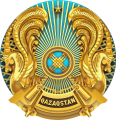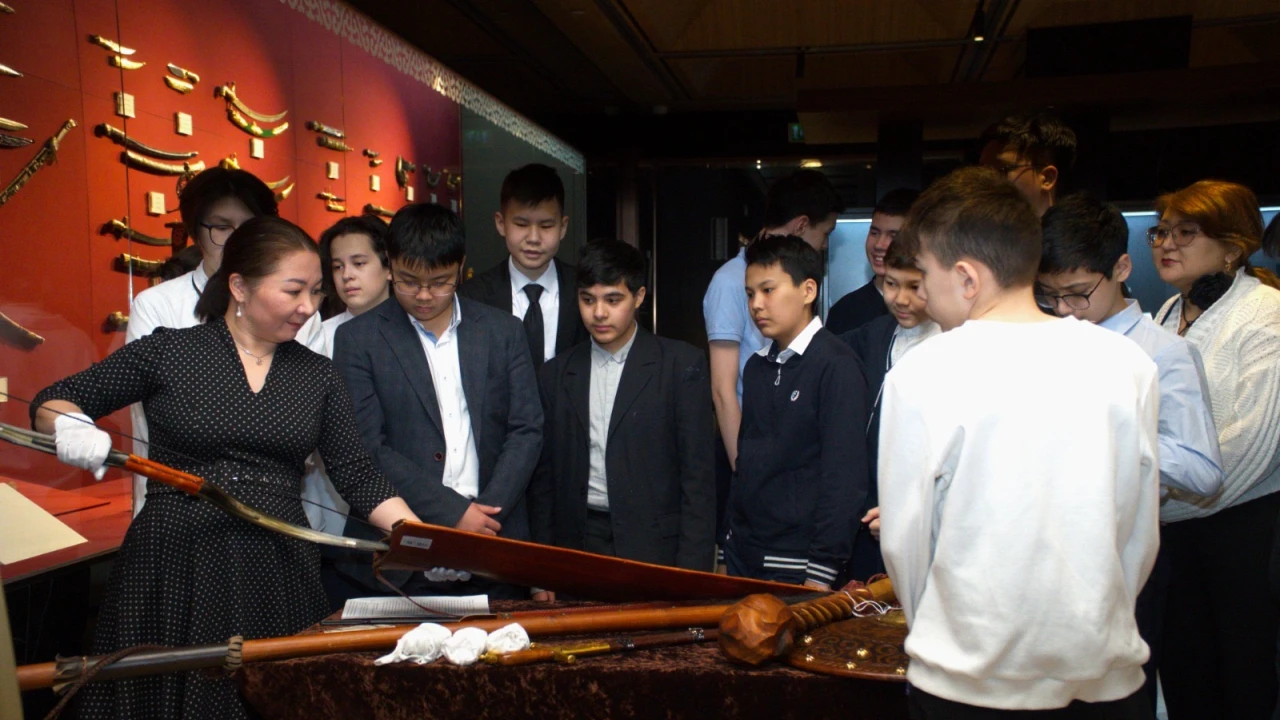
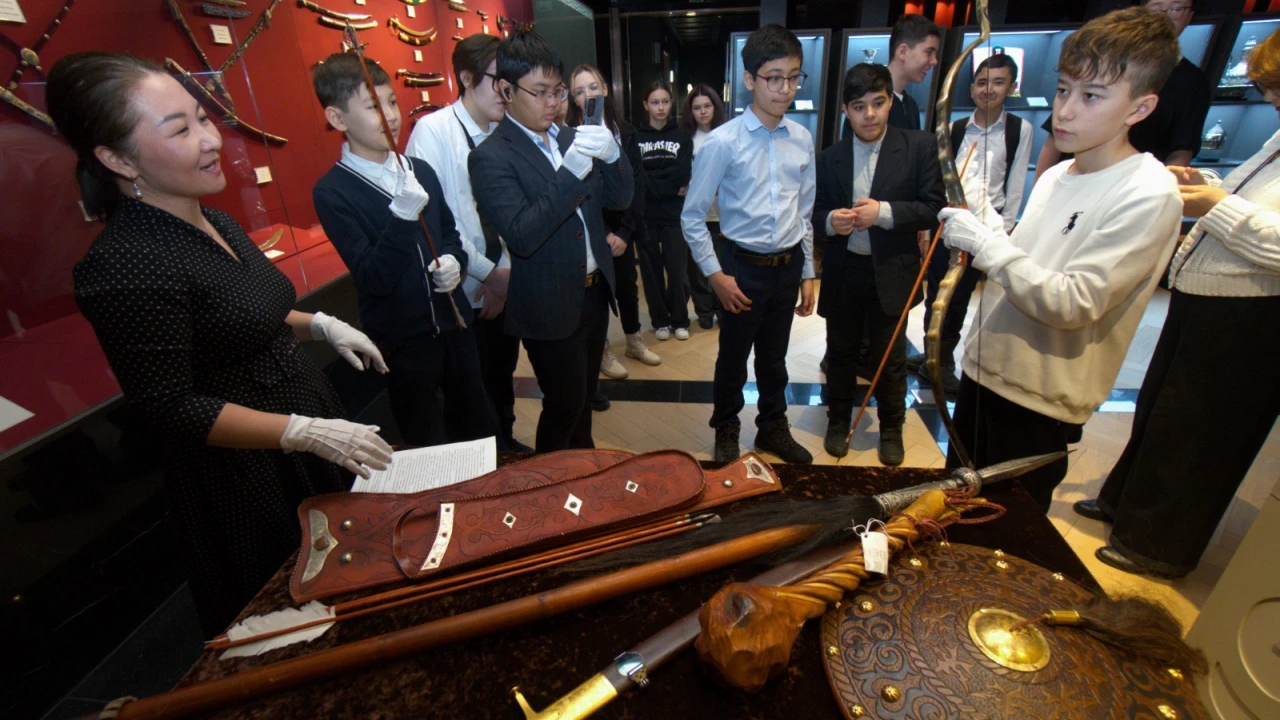
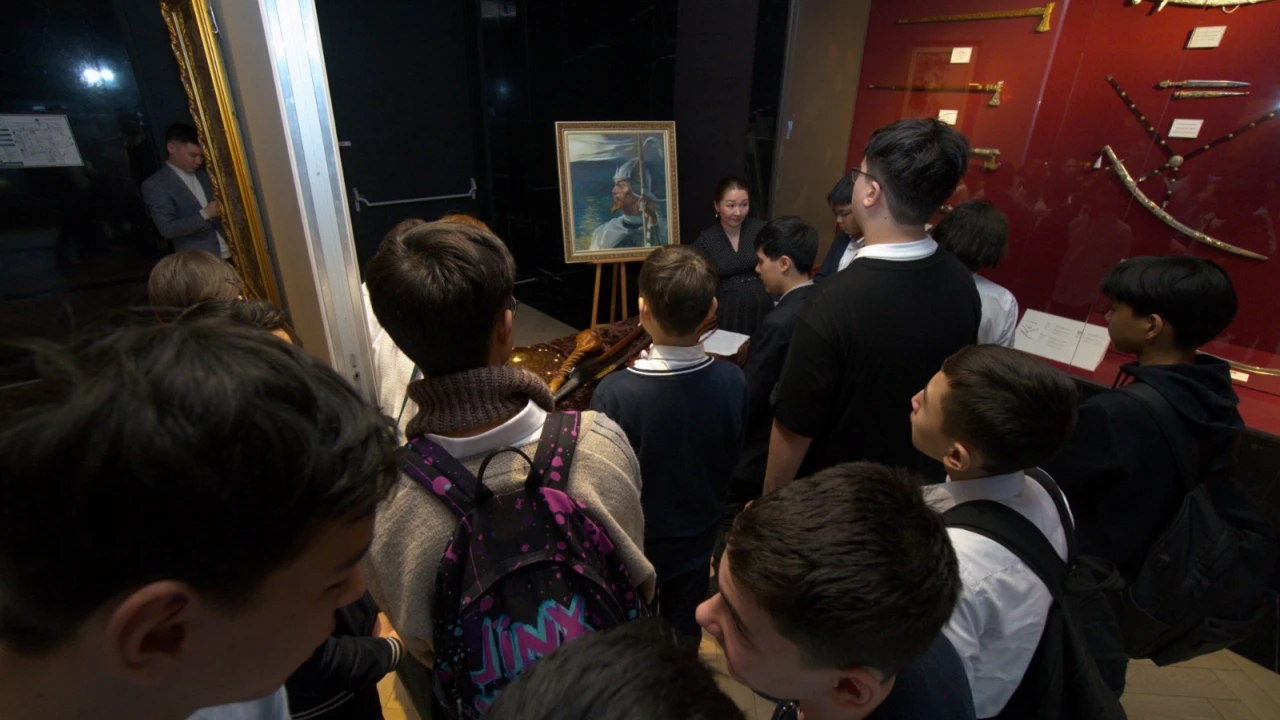
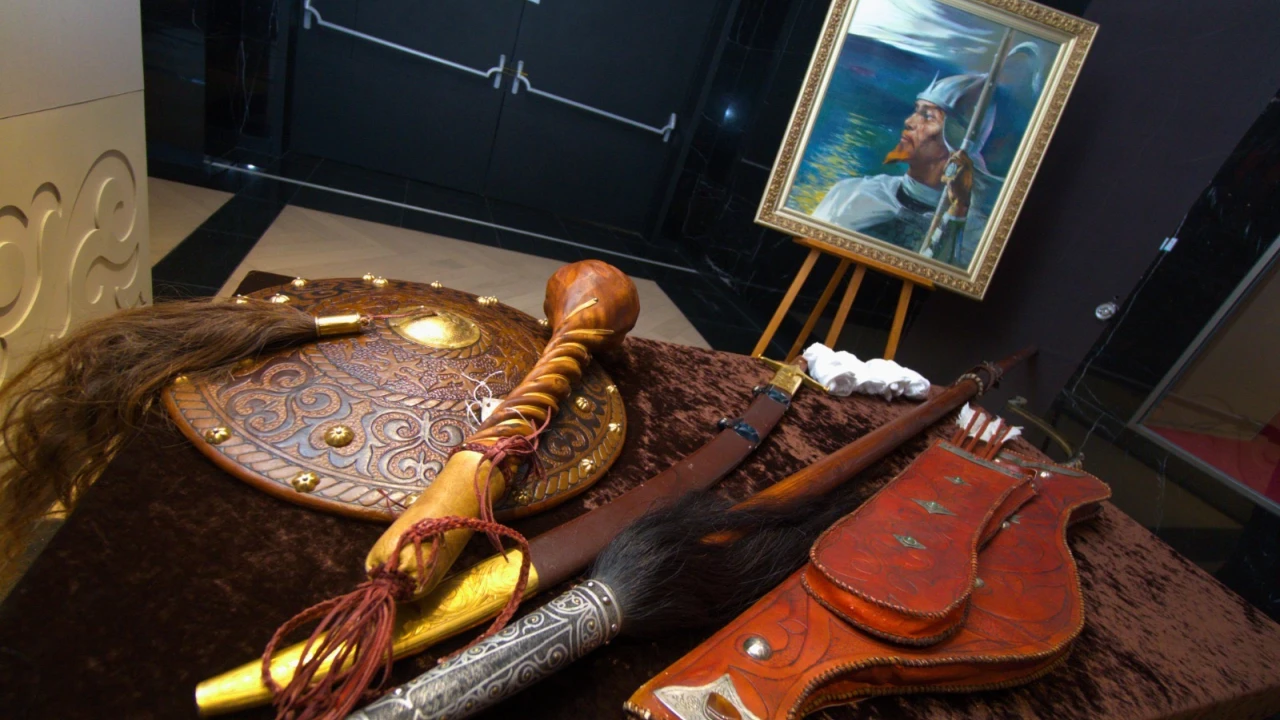
The Presidential Center of the Department of Presidential Affairs of the Republic of Kazakhstan places a high value on cultural and educational initiatives that seek to introduce innovative methods of popularizing the history of the country's independence, and instill in the next generation a sense of identity, unity, and patriotism.
These days, the Presidential Center of the Republic of Kazakhstan works with over 100 secondary schools in the country's capital. For these students, events such as master classes, special lectures, museum lessons, meetings, competitions, vacations, art therapy sessions, and much more are organized.
An illustration of this kind of collaboration is the lesson "Institute of Batyrhood:
Traditions, Status and Armament" from the cycle "Exhibits have begun to talk", which was attended today by students from the capital's school-gymnasium No. 5.
The lesson's principal goal is to acquaint students with our people's history by immersing them in a museum setting.
The boundless steppes of the Kazakh state often became the scene of many battles. The institution of batyrhood had an important political significance at that time.
Thanks to the wisdom, strength and military talent of batyrs, our lands today are our heritage, which we must pass on to future generations, and this thought runs through the whole lesson. In the course of the lesson, the children learned many interesting facts of the life and military feats of Kazakh batyrs, about their importance and status in society.
An important point is to hold a lesson in the museum hall in front of the exposition of cold weapons and military equipment. The unique collection tells about the culture of different nations of the world, as it includes samples of Arab, European, Caucasian and Turkish cold-arms.
In addition, the students got acquainted with the concept of "Bes Karu", which is the equipment of a warrior-batyr of five mandatory types of combat weapons: kylysh – saber, semser – sword, naiza – spear, sadak – bow, kurzi – mace, aybalta – battle axe. They were fascinated by the lecturer's story about the history and peculiarities of the tradition of gun donation, as well as world-famous gun schools.
The main distinguishing feature of this museum lesson is that Kazakh weapons, including the "Bes Karu", are in the public domain. This is a rare case when exhibits are taken out of storage and you can not only see them, but also hold them in your hands, and even take a photo for memory. Children are always delighted and surprised when they touch the exhibits. In the final part of the lesson, when exchanging opinions, schoolchildren often admit that holding such exhibits in their hands, they feel like warriors-defenders.
"The lesson at the museum was very interesting. We have learned a lot from the history of Kazakhstan and other countries. I enjoyed looking at the collection of bladed weapons. Time flew by", DilmukhamedBaimagambetov, a student of the "8th B" grade of the gymnasium school No. 5 in Astana, shared his impressions.
"The museum collection of the Presidential Center of the Republic of Kazakhstan is unique and diverse. These include collections of awards, items made of precious metals and stones, weapons and military equipment, souvenirs, fine arts, numismatics, archival documents, photos, video materials and much more. There is a long holiday weekend ahead and residents and guests of the capital have a great opportunity to come to our museum and broaden their horizons", said Gulsim Sarsekeeva, lecturer at the Presidential Centerof the Republic of Kazakhstan.
Noteworthy is the fact that over seventy cultural and educational events are scheduled for this year at the Presidential Center of Kazakhstan, expected to draw in over ten thousand attendees from the country.

